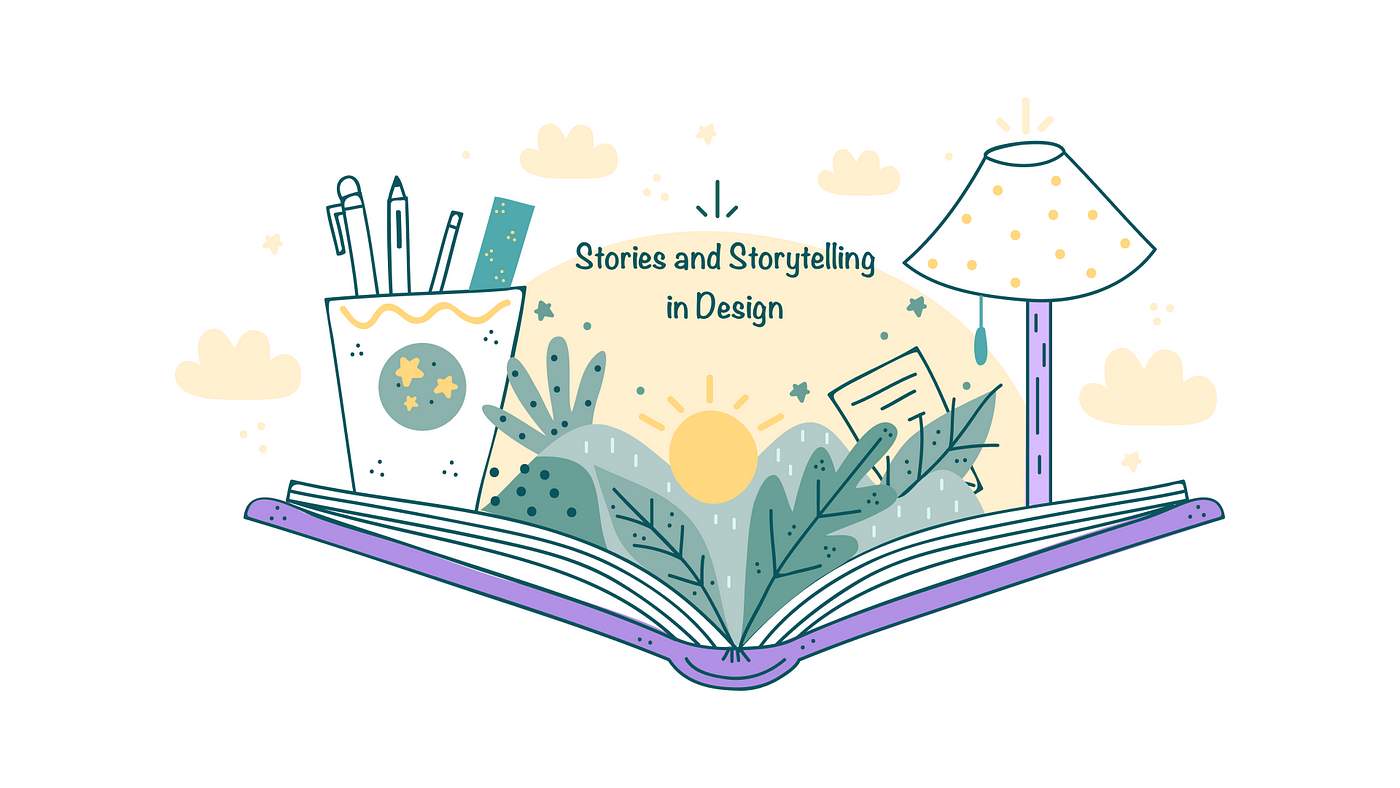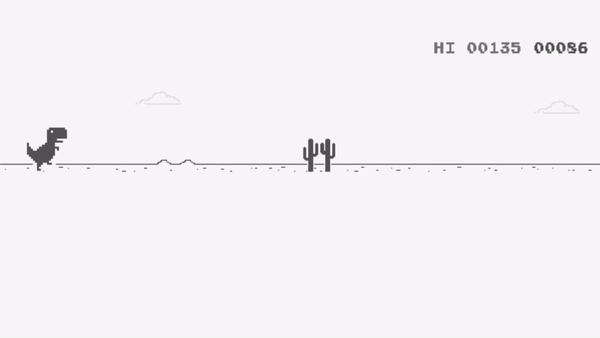
On the other hand, storytelling is the perfect way to make the audience engage and understand our thoughts and ideas.
“The stories we tell literally make the world. If you want to change the world, you need to change your story.” — Michael Margolis
Here I will show how these two factors help the design industries make a better user experience for their target audience.
Stories
A story is an actual or imagined description of a connected series of events.
In our day-to-day life, we use stories to understand every little thing. Moreover, we store everything as a story in our minds. That is human nature. A linguist and anthropologist, Mary Catherine Bateson, describe it as:
“The human species thinks in metaphors and learns through stories.”
Stories in Design
The design process is the initial and crucial part of building a product for the real world. Hence the person who works as a designer (UX Designer) should possess the following natures.
- Think from the real-time user perspective.
- Their thoughts and solutions should align with the user’s expectations.
For these reasons, designers are in the circumstance to understand users.
In this scenario, stories play a crucial part in understanding users’ problems and expectations.
“Sometimes, the reality is too complex. Stories give it form.” — Jean Luc Godard
How does it help?
To understand the user’s problems and expectations, the design teams follow an idea called User Stories.
Kent Beck coined The term ‘User stories’ in his book Extreme Programming Explained. Later, Mike Cohn generalised the principles of user stories in his book User Stories Applied: For Agile Software Development.
The design teams that follow agile software development currently use the most common Connextra template.
User Stories
User stories are short, simple descriptions of a feature told from the user or customer’s perspective for a particular product or a service.
User stories written in the connecter format have three parts to answer the questions of who, what, and why.
- As a (who wants to accomplish something)
- I want to (what they want to achieve)
- So that (why they want to perform that thing)
For example:
- As an employee
- I want to know my performance graph
- So that I can identify how to improve my career
With the help of these user stories, we can get the user’s problems and expectations very efficiently.
Here, I will give you a glimpse of the User Persona, the input provider for these user stories.
User Persona
User Persona is like an expanded version of the biodata of a fictional character.It represents the ideal target user of the respective product or service. It is created based on user research.
Here are some examples of user personas:



Storytelling
Storytelling is the perfect way of expressing our thoughts and ideas.
We know stories help us to understand someone’s thoughts. Likewise, storytelling helps the rest of others to perceive our ideas.
“Storytelling reveals meaning without committing the error of defining it.” — Hannah Arendt
Aristotle has written seven crucial elements of good storytelling, and he called it drama. They are:
- Plot
- Characters
- Theme
- Dialogue
- Melody/Chorus
- Decor
- Spectacle
He has believed that these elements would make the storytelling exceptional.
Storytelling in Design
Aristotle’s seven elements of good storytelling help each other to empathise. His points can also show us how storytelling can help in increasing user experience in designing a product.
“Storytelling is the most powerful way to put ideas into the world today.” — Robert McKee
To prove my theory, I like to demonstrate a real-time example. But, first, we all know Google’s Chrome Browser, one of the most distinct products that give a seamless experience to its users.
Here I will demonstrate how Google’s Chrome browser has delivered exceptional storytelling experience (user experience) to its audience(users) with the help of these seven elements proposed by Aristotle.
Plot | User journey and goals
Plot or storyline is the first element that answers the questions
- What is the character(s) doing?
- What are the goals they are trying to accomplish?
- How do they achieve it?
The storyteller(writer) decides what happens to the characters and how the storyline helps the characters to achieve the goal.
What are the users’ goals in a product, and how do they achieve them in the user journey? Here a designer determines what happens to the users when they accomplish their goals.
The goal of the users who use the Chrome browser is to search and find something they want. In this case, Chrome provides a simple and most efficient way to search and find their desired things.
How does Chrome answer the previous questions?
- What is the character(s) doing? Ans: Searching
- What are the goals they are trying to accomplish? Ans: Search and find something they want.
- How do they achieve it? Ans: With the help of the search bar.
Characters | Users or target audience
Characters are the people who interact with each other in a story. Likewise, the target audience is the characters for the product.
The target audience and some elements in the plot may act as characters. A support chatbot is the best example of such a non-human character. A menu bar will also behave like a character as it interacts with others.
In Chrome, with the addition of the target audience, the search bar, Google voice assistant, and even search suggestions act like the characters.
Theme | Approach to the solution
The theme is the idea of the storyteller(writer), which decides how the character behaves and situations happen. It sets how the story will move on, creating curiosity among the readers. Sometimes, the theme itself will be the selling point of that story.
Likewise, in a market where competitors deal with similar or even the same plot and characters, the theme can be the differentiator. For a product, the approach to the solution is the thing that decides how the product solves the user’s problems differently when compared to the other competitor products. Therefore, it will give uniqueness to the products.
We all know that Chrome uses a unique way to solve users’ problems. The term Page Ranking Algorithm is a standout feature that differentiates Chrome from other browsers. It gives uniqueness to the Chrome browser.

Dialogue | Tone of voice and communication
Dialogue is one of the media to communicate with the audience in storytelling. And also, it will vary accordingly with a different set of audiences. For example, a story for a kid and an adult won’t use the same type of dialogue. So the tone of communication of the report will be limited by the audience.
Likewise, the product’s target users will decide the tone of voice for the product. This scenario includes the content and the visual representations like icons and typography. Besides, consistency is the key factor which furthers any tone of voice of the product.
In this base, Chrome has a unique tone of voice. It also maintains consistency in it. You can see Chrome handles a casual at the same time engagement in its communication tone.


Melody | Recognisable factor for the user
As the melody of the storytelling, the audience recognises no other things. So it will apply to the recognisable factors which give a distinct look among the users of a product.
In this case, Google’s Chrome has a different fanbase for its recognisable home page. From Google.com to date, it maintains its uniqueness on its home page. Chrome keeps its home page with a clean and neat minimal design. And also, it allows the users to customise it as they wish. It has only prioritised and prominent features on its home page. It gives a recognisable factor for the chrome browser.
Decor | Graphic design that elevates the above elements
The set is the most appealing thing in the storytelling. Primarily, the audience will sense the visually appealing results more than other means of outcomes. Hence set will create the first impression of the storytelling among the audience. If it fails to impress them, the whole process will be vain.
Likewise, in product design, the overall experience is the stand-out thing. But it takes some time to get the whole experience of the product. So to impress the user and attract them to the product, the designers use the graphics part. It will set the mood for the product. So a product easily convinces the user to use it for the first time through visually appealing graphics.
We all know that Google Chrome is one of the products which gives visually appealing graphics to its users. And also, it maintains a different colour palette from other products. For example, it has four colours that are present opposite in the colour wheel. This factor differentiates the Chrome browser from other browsers in a visual form.

Spectacular | Clever, Surprising and impressive little details
This element is the finishing touch for any storytelling. The audience never liked a story that didn’t have any surprising twist. Moreover, a story without a climax is like Bread without jam. This little thing impresses the audience massively. It will give an overwhelming feeling to the audience listening to the story.
Likewise, this is where the designers can show their creativity level for a product. This part of the design is just a little thing, but it excites the user more than other parts. Because all other elements are basic expectations of the user, this one will be the part where the product gives a surprise for their users.
Again, Google’s Chrome browser element is a masterpiece and an inspiration for other products. That is none other than Google’s T-rex run game. It will appear only when the user is offline. Google created this game to entertain its users when they don’t have other options to work on the browser. Six years ago, chrome introduced this feature on the occasion of its 10th birthday.

Points to remember
- Stories are a popular tool that we always use to learn everything.
- “Sometimes, the reality is too complex. Stories give it form.” — Jean Luc Godard
- User stories are short, simple descriptions of a feature told from the user or customer’s perspective for a particular product or a service.
- User Persona is like an expanded version of the biodata of a fictional character. It represents the ideal target user of the respective product or service.
- Storytelling is the perfect way of expressing our thoughts and ideas.
- Stories help us to understand someone’s thoughts. Likewise, storytelling helps the rest of others to perceive our ideas.
- Aristotle‘s seven crucial elements of good storytelling: Plot, Characters, Theme, Dialogue, Melody/Chorus, Decor, and Spectacle.
Yes, we are in the conclusion part of this article. As always, this article attempts to demonstrate the role of stories and storytelling in design. This article has been written with my knowledge and some references that I have come across.
Imad Al JaddawI
Founder & Director of Qalam


